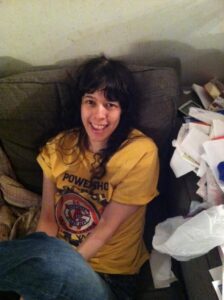“Astronauts helped me learn more about our planet, how beautiful it is from space, how important it is to take care of it. One day my dream is to go to Space, to the Moon or to Mars,” Hayden
“10, 9, 8, 7, 6, 5, 4, 3, 2, 1…”
As astronaut Tim Peake blasted off on his journey to reach the International Space Station, nobody was more surprised than Caroline Geraghty when her young son joined in with the countdown. Up until that point, 5-year-old Hayden had been virtually non-verbal, relying on a series of printed cards to help him communicate. The spark that Tim Peake’s Principia mission ignited opened-up new worlds for Hayden, now diagnosed with autism and ADHD, triggering an interest in all things space-related.
“Before diagnosis, and when Hayden was non-verbal, it was a very tough time for him,” says Caroline Geraghty. “It was frustrating, as he could not communicate his needs.”
But Hayden, who is the youngest member of his astronomy club, is now able to express himself and his goals with clarity, “Astronauts helped me learn more about our planet, how beautiful it is from space, how important it is to take care of it. One day my dream is to go to Space, to the Moon or to Mars.”
Hayden didn’t know at the time that accompanying Tim Peake on his mission was “Stargazer Lottie,” a doll from international toy company Lottie Dolls, inspired by a six-year-old girl called Abigail, produced in collaboration with the European Space Agency. The doll spent 264 days in total on the ISS.

Caroline says, “Even before Hayden could speak I would notice he watched the stars in the night sky, so the interest was always there, he just wasn’t able to communicate it before.”
“Rigid academic and social expectations could wind up stifling a mind that, while it might struggle to conjugate a verb, could one day take us to distant stars.” That’s according to Temple Grandin, professor, inventor, author and expert in the disparate worlds of animal science and autism education who herself was diagnosed with autism as a child. Temple points out that there needs to be an emphasis on building up the strengths of autistic people rather than focusing on so-called “deficits”. If a cure for autism were found, Temple Grandin says that she would choose to stay just the way she is. “I like the really logical way that I think. It kind of blows my mind how irrational human beings are.”
And now Hayden has inspired an addition to the Lottie Dolls’ range. Named “Loyal Companion”, the doll further emphasizes the company’s vision that childhood should be an inclusive place where every child belongs regardless of gender, ethnicity or ability.
In addition to an astronaut jumpsuit, the set includes an assistance puppy with a blue bandana, to signpost that the dog has been trained to support a child with autism. It also includes a T-shirt for the doll which proudly names three important people with autism: Nikola Tesla, Albert Einstein and ME. The set also includes communication cards, headphones, sneakers, sunglasses (to assist with sensory issues with bright lights), and jeans.
The benefits of toys like “Loyal Companion” reach beyond representation. Psychologist Dr Sian Jones from Queen Margaret University, Edinburgh has studied the effects of playing with toys with disability and difference on the attitudes of children without disability and difference. Interviewing hundreds of children, she found that after playing with toys like the one inspired by Hayden, children were more open to forming friendships with peers with disability and difference.
The “Loyal Companion” doll can be pre-ordered on www.lottie.com
About Lottie Dolls
Based in Donegal, Ireland, Lottie Dolls are sold in over 30 countries worldwide. Unlike other dolls, Lottie is based on a child and focused on childhood, letting kids be kids. To date they have sold over 1 million dolls.









Great article! Thank you very much for sharing this information. Now everyone is talking about ADHD and I even read about it on https://google.com/adhd